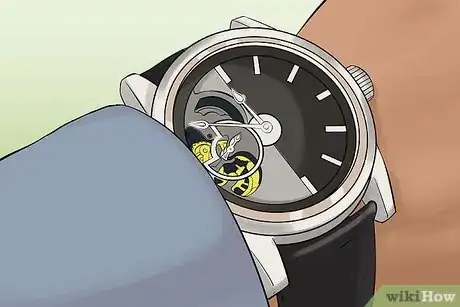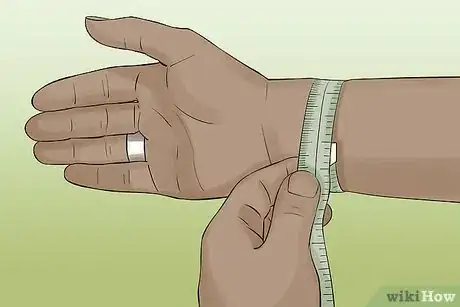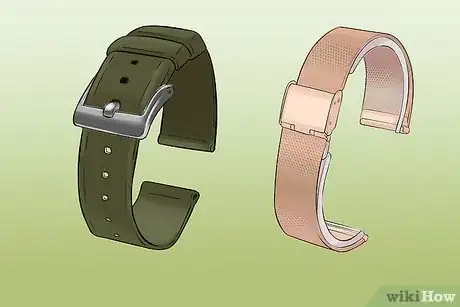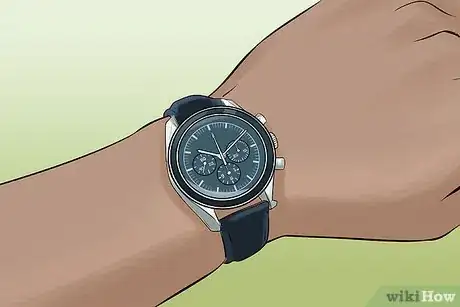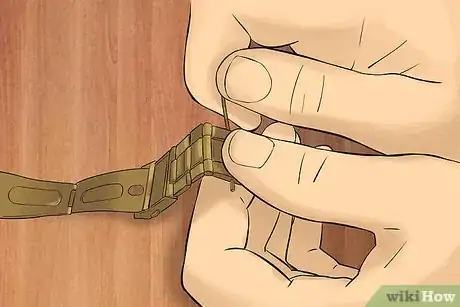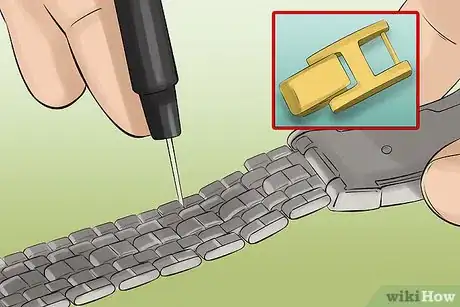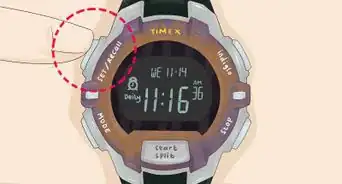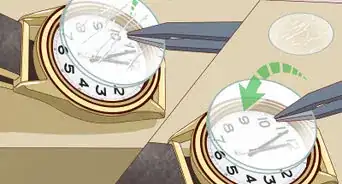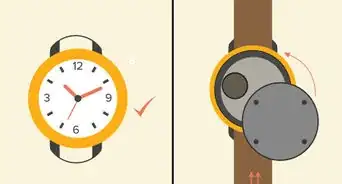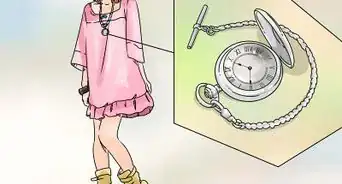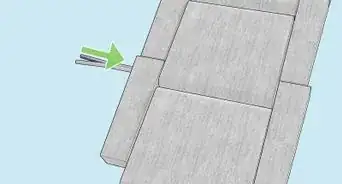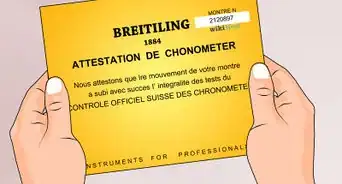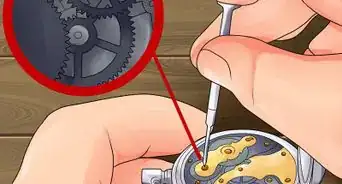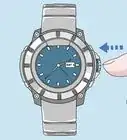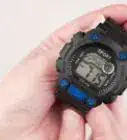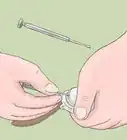This article was co-authored by wikiHow staff writer, Jessica Gibson. Jessica Gibson is a Writer and Editor who's been with wikiHow since 2014. After completing a year of art studies at the Emily Carr University in Vancouver, she graduated from Columbia College with a BA in History. Jessica also completed an MA in History from The University of Oregon in 2013.
This article has been viewed 32,491 times.
Learn more...
If you're looking for a new watch or want to make your current watch to fit better, learn how to size a watch. Keep in mind what kind of a fit you'd like when you're shopping for watches so you know what to look for. This can prevent future adjustments. If you do need to make adjustments to your watch, determine how you'd like your watch to fit and then add links, remove links, or replace the strap.
Steps
Selecting the Right Size
-
1Decide how thick you want the face to be. Most watch faces are between 6 and 10 millimeters thick. If you prefer a smaller or lighter watch, consider choosing one that's closer to 6 millimeters thick. You may want a thinner face if you're bothered by a watch that snags on things.
- Keep in mind that you'll usually have more control over the diameter of the watch face rather than its thickness.
-
2Measure your wrist. Take a flexible ruler and wrap it around your wrist. This will give you a measurement so you can choose the best diameter for your wrist. For example, for wrists:
- Smaller than 5 to 6 inches (12 to 15 cm), choose a diameter 38 millimeters or less.
- Between 6 and 7 inches (15 to 17 cm), pick a 38 to 42 millimeter diameter.
- Between 7.5 and 8 inches (19 to 20 cm), go with a 44 to 46 millimeter diameter.
Advertisement -
3Pick the size of the band. Your watch will feel more comfortable if you choose the right size band. Try on several watches to decide how wide you'd like the band to be. If you want to wear a wide band, decide if you'd like it to fit tightly on your wrist. For a looser fitting band, pick a thinner band that can slide up and down on your wrist (like a bracelet).[1]
-
4Choose a strap material. You have a lot of options when it comes to the strap material. If you expect you'll be sizing the watch a lot, choose a material that will be easy to adjust. Fabric or leather straps might be the easiest to adjust since you can simply use a different hole to secure the strap.
- If you choose metal straps, you'll need to use jeweler's tools to add or remove links when sizing the watch.
-
5Check the fit of the watch before you buy it. Once you've selected a watch, try it on and ask the jeweler to make any adjustments. Ask if you can take home extra links or a spare strap so you can size the watch in the future. Many jewelers will be happy to add holes to watch bands or remove extra links from the band.
Adjusting Your Watch Size
-
1Identify if you need to adjust your watch. Since watches can be worn tightly or loosely, you'll need to decide if the watch is fitting the way you'd like. Check your wrist after wearing your watch to see if it leaves an imprint on your skin. If it does, your watch might be too tight. Or if the watch bothers you by sliding up and down on your arm, you may want to tighten it.
-
2Remove links to make the band smaller. To secure the watch to your wrist, consider wearing it on a tighter setting. If you have a metal strap with links, pinch the clasp up towards you. This will show you how many links to remove. Use needle-nosed pliers and a push pin to remove the extra links or take the watch to the jeweler.[2]
- If you have a fabric or leather strap, use a different hole on the strap to secure it to your wrist.
-
3Add links to loosen the band. If your watch is fitting too snugly on your wrist, add links to the band. You'll need to use links that came with the watch when you bought it or ask a jeweler to add new links for you. Carefully remove the pins from the clasp end and insert the new link. Secure the clasp end back onto the strap.
- If you have a fabric or metal strap, use a different hole to secure the watch. If you're on the loosest hole setting, you may need to use an awl to punch an extra hole in the band.
-
4Replace the watch strap. Use a screwdriver to remove the screws on both sides of the lugs. The lugs are the metal points that hold the strap to the watch itself. The strap should come away easily once you've unscrewed it. Put the new strap in place and screw both sides back into the lugs. Try on the watch and adjust the strap according to your preferences.[3]
- If you're unsure what size strap you'll need, look on your old strap. Many straps will have the size printed on the underside of the band. If you don't see it, measure the distance between the lugs in millimeters.
Things You'll Need
- Need-nosed pliers
- Small screwdriver
- Push pin
- Awl
- Extra links
- Replacement strap
